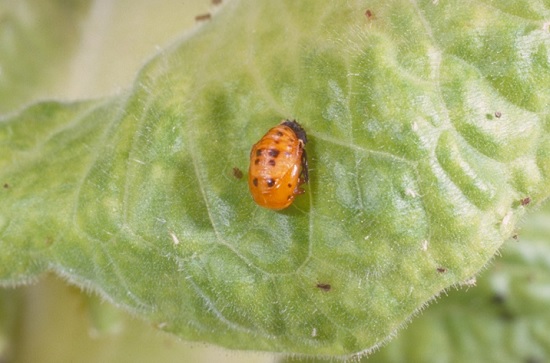Ladybugs
ENTFACT-702: Ladybugs | Download PDF
by Ric Bessin, Extension Entomologist
University of Kentucky College of Agriculture
Ladybugs, also called lady beetles or ladybird beetles, are a very beneficial group. They are natural enemies of many insects, especially aphids and other sap feeders. A single lady beetle may eat as many as 5,000 aphids in its lifetime. Many species of lady beetles are present in Kentucky and they are common in most habitats.
Adult lady beetles have very characteristic convex, hemispherical to oval shaped bodies that can be yellow, pink, orange, red, or black, and usually are marked with distinct spots. This is a type of warning coloration to discourage other animals that may try to eat them. Like many other brightly-colored insects, they are protected by an odorous, noxious fluid that seeps out of their joints when the insects are disturbed. The bright body coloration helps some predators to remember the encounter and avoid attacking insects with similar markings.
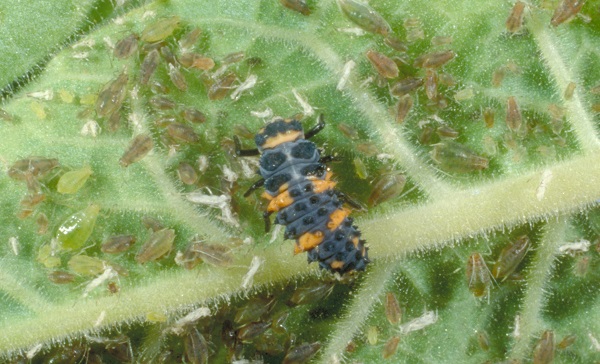
Figure 1. Lady beetle larva feeding on aphids
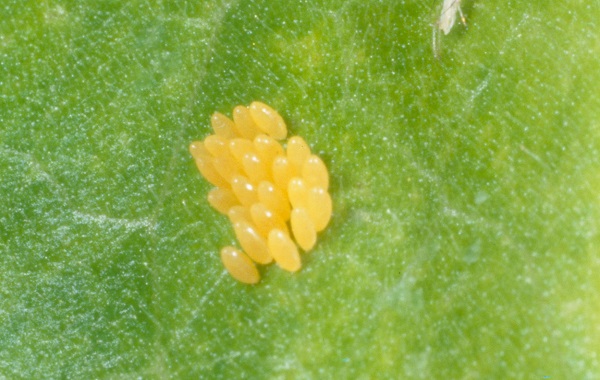
Figure 2. Cluster of lady beetle eggs
Adult females usually lay clusters of eggs on plants close to aphid, scale, or mealybug colonies. The alligator-like larvae are also predators. They are spiny and black with bright spots. Although they look dangerous, lady beetle larvae are quite harmless to humans. After feeding on insect prey for several weeks, the larva pupates on a leaf. Adults tend to move on once pests get scarce, while the larvae remain and search for more prey.
Figure 3. Lady beetle pupa.
Some lady beetle species have several generations each year while others have only one. During the summer months, all stages often can be found at the same time. Adults of some species spend the winter clustered together in large groups under leaf litter, rocks, or other debris.
Common Kentucky Lady Beetles
While there are many species of lady beetles in Kentucky, a few are very common in agricultural fields, home gardens and landscapes, and wooded areas. These include: Coleomegilla maculata, sometimes called the pink spotted lady beetle has a medium-sized, oblong pink to red body marked with black spots. Both adults and larvae are important aphid predators but also eat mites, insect eggs, and small larvae. Unlike most lady beetles, plant pollen may make up to 50% of the diet.
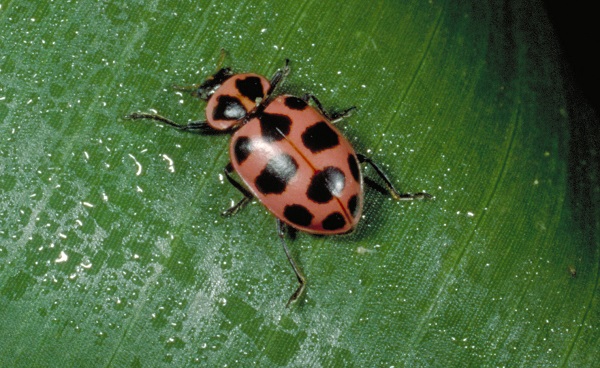
Figure 3. Coleomegilla maculata is a pink lady beetle and is very common.
Harmonia axyridis, the Asian lady beetle, a large orange lady beetle that may or may not have spots. The segment over the head is white with a black ‘M’. In the fall, aggregations of Asian lady beetle find their way into homes. These beetles are a nuisance and can ruin rugs and other furniture with their secretions. Fortunately, they do not breed or feed inside the home. For complete information on managing Asian lady beetle problems in the home, See ENTFACT-416, “Asian Lady Beetle Infestation of Structures.”

Figure 4. Asian lady beetle is a beneficial insect in the field and nuisance pest in homes.
Hippodamia convergens, the convergent lady beetle, a medium sized orange and black species that is commonly sold for biological control of aphids.
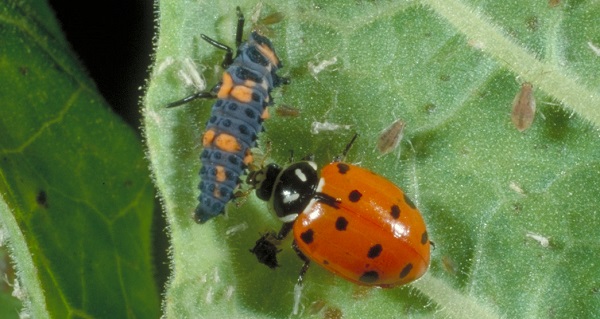
Figure 5. Convergent lady beetle and larva in common and can be purchased commercially.
Coccinella septempunctata, sevenspotted lady beetle, sometimes called ‘C-7', is a medium-sized, orange beetle with seven black spots. It is a European species that was introduced into the US to aid in managing some aphid pests.
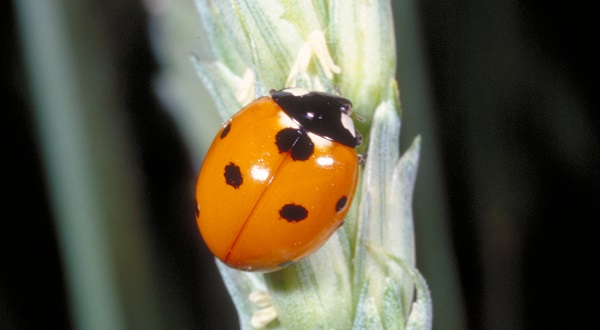
Figure 6. Seven-spotted lady beetle is common on many crops.
Plant Feeding Lady Beetles?
There two species of lady beetles in Kentucky that feed on plants rather than insects. They are the Mexican bean beetle and the squash beetle. Both are very easy to recognize. Mexican bean beetle adults, which feed on garden beans and occasionally soybeans, have orange bodies with eight black spots on each wing cover, Squash beetles, which attack squash, pumpkin, and cantaloupe, have only seven spots. The larvae are also very distinctive and shouldn't be mistaken for predaceous larvae, because they have large forked spines across their yellowish orange bodies.
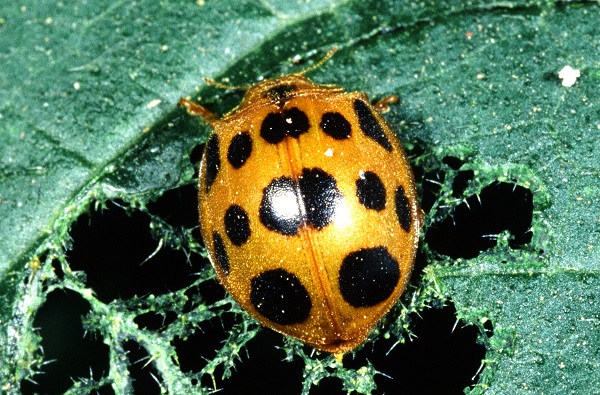
Figure 7. While the squash beetle is a type of lady beetle, these feed only on plants and are considered pests.
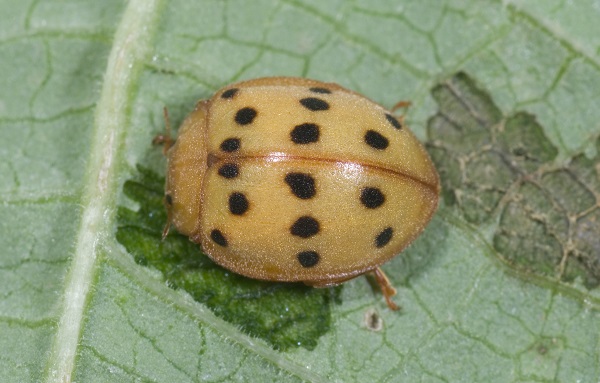
Figure 8. Mexican bean beetle attacks many different types of beans feeding on the undersides of leaves.

Figure 9, Larvae of the Mexican bean beetle and squash beetle with their yellow bodies and spines look very different from other lady beetle larvae.
Conserving Lady Beetles
Lady beetles can play an important role in managing some insect pests in crops and landscapes. Here are some things that you can do to maximize their impact.
- Learn to recognize the different stages of these beneficial insects.
- Make insecticide applications only when necessary and use selective insecticides or limited treatments to avoid killing lady beetles.
- Add plants that can provide pollen and nectar for lady beetles. These are important components of the diets of some species.
Revised: 8/22
CAUTION! Pesticide recommendations in this publication are registered for use in Kentucky, USA ONLY! The use of some products may not be legal in your state or country. Please check with your local county agent or regulatory official before using any pesticide mentioned in this publication.
Of course, ALWAYS READ AND FOLLOW LABEL DIRECTIONS FOR SAFE USE OF ANY PESTICIDE!
Photos: Ric Bessin, University of Kentucky Entomology
